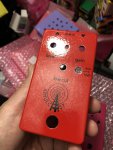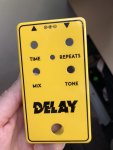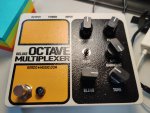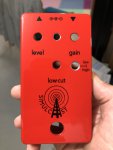SYLV9ST9R
Well-known member
Hi all,
As my first post, I have an inkjet waterslide decal-related questions for you guys.
I've got my first builds lined up (Plecostomus, Chop Shop, Catalyst, Informant, Pro-Filter, Simulcast and Unicab), as I'm still waiting for my iron who's in the postal system somewhere, but I've started to apply waterslide decals to my enclosures to pass the time.
I've gone through a couple of sheets ironing my kinks and getting better, but still have some issues.
As you can see, there are a lot of microbubbles that appeared while drying (some due to the irregular surface in the paint I think), even though I was very careful and it looked pretty fine when I applied the decal.

So here are my questions if you have any hindsight:
- Is there something I should do prior to applying the decal?
- Would a solution (i.e. Micro-Sol or Solvaset) help removing those bubbles?
I had better luck with this one on which I applied a light clear coat before applying the decal (as the paint was really orange-peely). Would that be the way to go?

Thanks for any help, can't wait to share my builds, as this forum has already been a great resource!
As my first post, I have an inkjet waterslide decal-related questions for you guys.
I've got my first builds lined up (Plecostomus, Chop Shop, Catalyst, Informant, Pro-Filter, Simulcast and Unicab), as I'm still waiting for my iron who's in the postal system somewhere, but I've started to apply waterslide decals to my enclosures to pass the time.
I've gone through a couple of sheets ironing my kinks and getting better, but still have some issues.
As you can see, there are a lot of microbubbles that appeared while drying (some due to the irregular surface in the paint I think), even though I was very careful and it looked pretty fine when I applied the decal.

So here are my questions if you have any hindsight:
- Is there something I should do prior to applying the decal?
- Would a solution (i.e. Micro-Sol or Solvaset) help removing those bubbles?
I had better luck with this one on which I applied a light clear coat before applying the decal (as the paint was really orange-peely). Would that be the way to go?

Thanks for any help, can't wait to share my builds, as this forum has already been a great resource!



